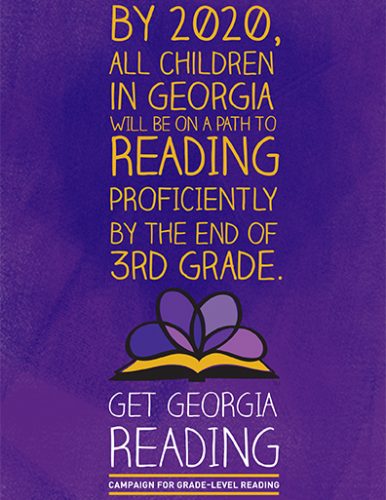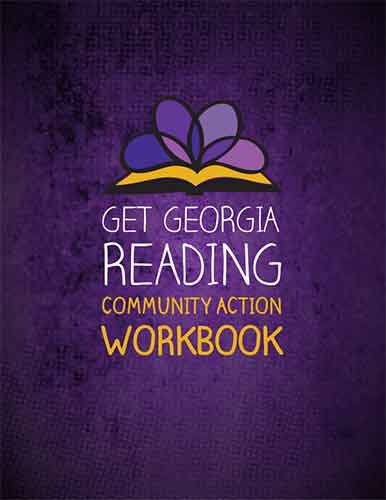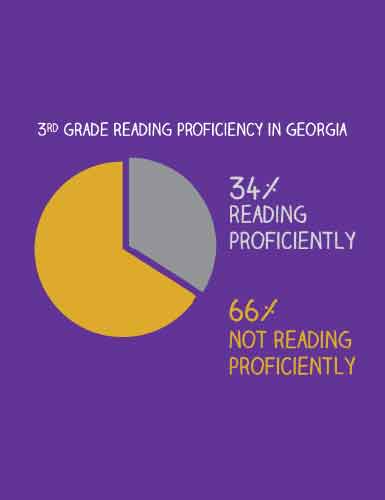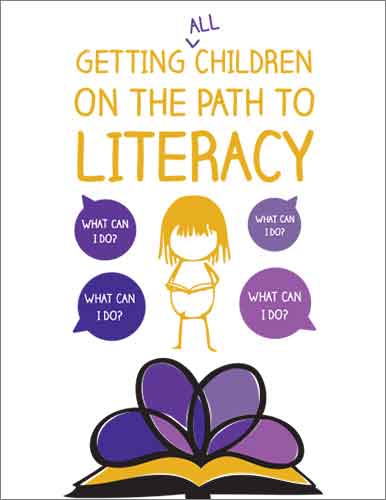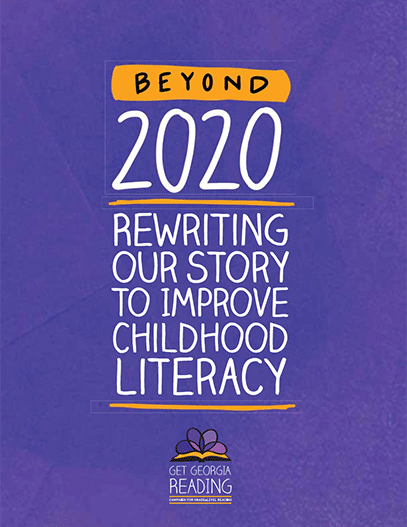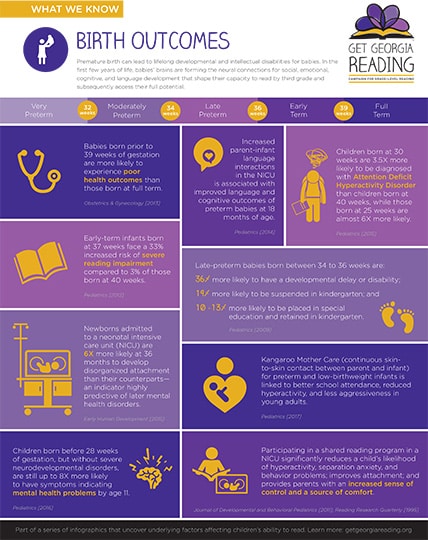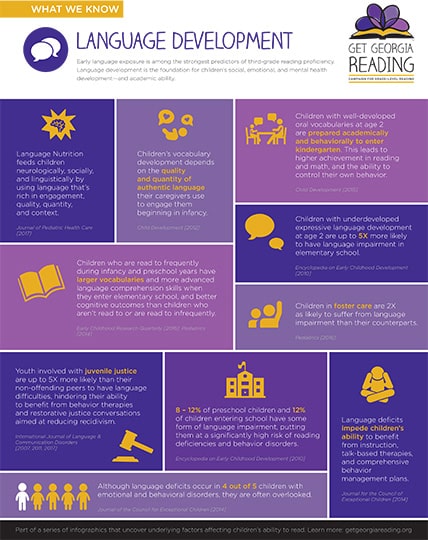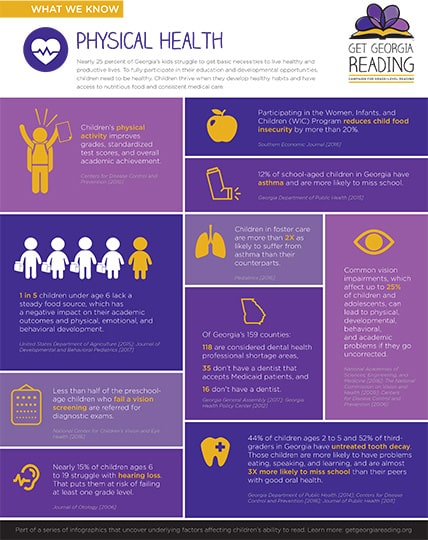There are nearly 1 million children under the age of 9 currently living in Georgia. In order to ensure that every child in Georgia becomes a proficient reader by the end of third grade, the Get Georgia Reading Campaign has built a set of tools—including videos, downloadable workbooks and reports, and inspiring stories—for communities to use to learn about the four-pillar framework, to examine community-level data, and to identify new and innovative ways of working together and aligning efforts.
Download these helpful PDFs or contact us to receive printed versions.
Building the Path to Reading Proficiency: A Compendium of Research and Evidence-Based Practices: This compendium provides a useful tool for parents, educators, health professionals, community and business leaders, legislators, and investors to use in their sphere of influence to make a difference for Georgia’s children, families, and communities.
Community Action Workbook: Since 2015, we’ve gathered hundreds of state and community leaders in learning events to deepen their understanding of the research and best practices to get children reading proficiently by the end of third grade. Participants hear from experts across the state about the challenges and opportunities to get Georgia reading. These “lightning talks” illuminate the four-pillar framework and help identify key partners, important stakeholders, community successes, and examples of clear actions necessary to bring the pillars to life. The Community Action Workbook includes links to videos of the lightning talks, coupled with design-thinking exercises that every community can use to energize their own partners and stakeholders to align around key actions that will help all kids be on a path to reading proficiency. Visit our Vimeo channel for a complete library of all lightning talks.
Getting All Children on the Path to Literacy: What Can I Do?: This booklet features inspiring stories, ideas, and tips that parents, educators, health care providers, community and business leaders, legislators, and funders can learn from and act on to apply the four pillars in their daily lives to ensure all children in Georgia become proficient readers by the end of third grade.
Beyond 2020: Rewriting Our Story to Improve Childhood Literacy: This report shares what we’ve learned, our successes, and our challenges—and what we need to do next to ensure that every child in Georgia has access to the services and supports necessary to get on the path to learning to read by third grade.
What We Know & What We Can Do
This series of infographics uncover underlying factors affecting children’s ability to read.
Birth Outcomes: Premature birth can lead to lifelong developmental and intellectual disabilities for babies. In the first few years of life, babies’ brains are forming the neural connections for social, emotional, cognitive, and language development that shape their capacity to read by third grade and subsequently access their full potential.
Physical Health: Nearly 25 percent of Georgia’s kids struggle to get basic necessities to live healthy and productive lives. To fully participate in their education and developmental opportunities, children need to be healthy. Children thrive when they develop healthy habits and have access to nutritious food and consistent medical care.

